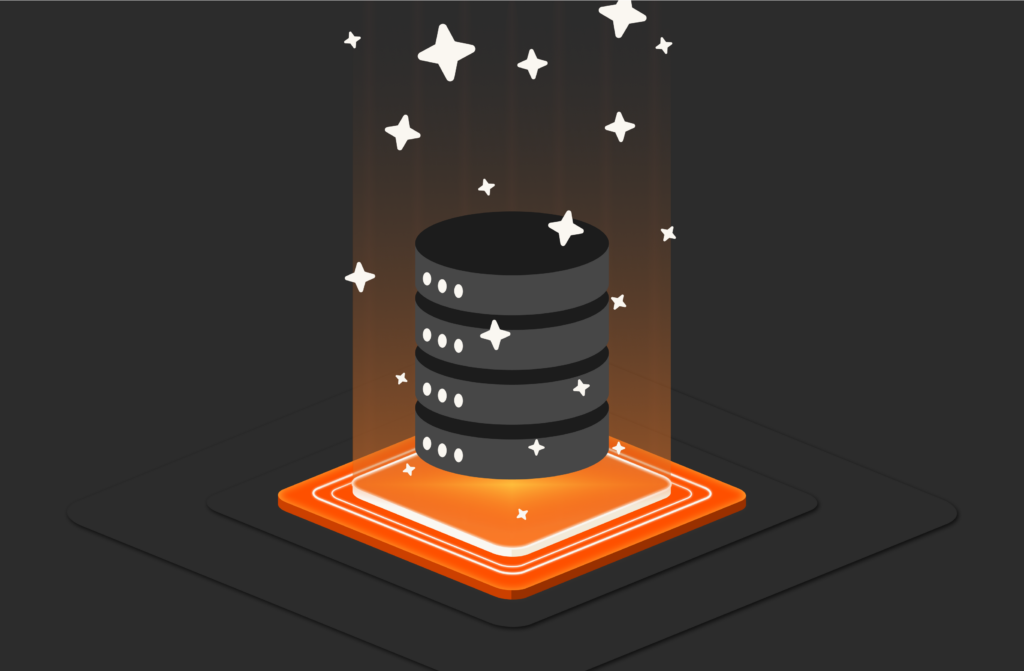Summary
AI can be a resource-intensive and power-hungry endeavor. A high-performance storage platform that offers seamless data accessibility, scalability, and energy and cost efficiency will be essential to meet the demands of AI today and into the future.
If 2023 is remembered as the year AI “moved from hype to reality,” 2024 is the year we’ve had to cut through the noise and get real about results. For IT leaders, the message is loud and clear: For AI to succeed, they’ll need robust and reliable data infrastructures.
With so much discussion hinging on speed, GPUs, LLMs, and ROI, it begs the question: “Why is a data platform essential for the success of my AI initiatives? What happens if I attempt AI without one?”
In this series, we’ll delve into the technical capabilities data infrastructures must have to propel AI innovation.
The Foundation for AI Is Data Infrastructure
Imagine AI as the Formula One car of data workloads. Data for AI projects isn’t yesterday’s data nestled in legacy systems; it’s dynamic, massive, and on the move. How it’s stored, accessed, and managed matters.
Your challenge, then, is to manage, store, protect, and deliver data without creating bottlenecks that hinder progress and ultimately slow down innovation. To do so, you’ll need:
- Seamless data accessibility, ensuring that AI models can be trained, retrained, and deployed without delays. Speed is important, but unification will become more important as time goes on.
- Scalability. To support increasing volumes of data while maintaining performance and speed, data infrastructure needs to scale horizontally across clusters of GPUs or CPUs, with orchestration tools to manage pipelines of new data.
- Security. A data storage platform must address several layers of data protection, security, and governance to ensure the safety, recoverability, and compliance of the data sets AI models depend on.
This is where the conversation shifts from gathering data to architecting it properly. Architecting a data infrastructure that is performant, scalable, reliable, and efficient at the right price requires forward-thinking design.

Built to Scale
with Evergreen
See how Evergreen and Pure Storage simplify
storage management across any environment.
Elements of a Unified Storage Platform for AI
Your storage platform must be able to address resource management and performance needs, full stop. Why? Without a storage platform optimized for high-throughput, high concurrency, and low-latency access, AI workloads can slow down or fail to meet performance expectations.
The right storage platform should consistently provide:
Seamless Data Accessibility with Pipeline Orchestration, High-bandwidth Networking
Solutions should first and foremost unify complex infrastructures and simplify data operations—the foundation for AI pipelines.
NVMe-based flash storage or tiered storage solutions can deliver high IOPS (input/output operations per second). As new data is ingested, transformed, and deployed, orchestration tools like Kubernetes can automate the movement of data between storage layers and compute clusters, ensuring continuous, real-time access to fresh training data.
The success of AI workloads also depends not just on fast storage, but on high-speed networking that can handle the data flow between storage systems, compute clusters, and edge locations. InfiniBand or RDMA (Remote Direct Memory Access) networking allows for ultra-fast data transfer between GPUs or compute nodes without consuming CPU resources, thus optimizing the entire AI pipeline.
Dive deeper in this next blog: “How a Data Platform Can Unlock Silos to Accelerate AI Pipelines“
High Throughput for Maximizing GPU Utilization
Consider graphics processing units (GPU) utilization. A “State of AI Infrastructure at Scale 2024” report revealed that while AI workloads are growing, GPU utilization remains a challenge. Companies report that they’re underutilizing available GPU resources, with only 7% seeing more than 85% utilization during peak times.
AI training jobs can often require rapid, parallel data access. Leveraging technologies like NVMe-oF allows data to be streamed directly to GPU-enabled compute clusters without being hindered by the traditional bottlenecks of spinning disk or slower SSDs. When data transfer is seamless, you maximize GPU utilization, ultimately accelerating time to insight.
Learn more about the architecture decisions to optimize GPU utilization >>
Scalability for Current and Future Needs
Training models can create significant strain on data infrastructure. As models are iterated and improved upon, the need for real-time data accessibility and feedback loops increases, further stressing the infrastructure.
What may be sufficient today could fall short tomorrow as data sets grow larger, models become more complex, and the need for real-time inferencing expands. Scalability, therefore, is non-negotiable. This requires integrating distributed file systems that support simultaneous data access from multiple nodes. Object storage systems are crucial as they allow large, unstructured data to be stored in a scalable manner.
A storage platform needs to scale effortlessly as your AI initiatives evolve, ensuring that you can manage increasing workloads without the need for constant infrastructure upgrades. S3-compatible object storage ensures that AI models can fetch data without compatibility issues across clouds or on-premises environments.
Best-in-class Data Resilience
Building a secure data infrastructure for AI is about mitigating risks at every point in the AI pipeline while ensuring compliance, reliability, and data governance.
Because AI workloads often involve moving sensitive data across different environments—cloud, on-premises, or edge computing nodes—in-transit and at-rest encryption is key. Data sets stored in databases, data lakes, or distributed file systems can be encrypted using standards like AES-256 so even if unauthorized access occurs, data remains unreadable. Advanced systems leverage hardware-based encryption to prevent attacks that target data in use.
Critical data sets for training and inference also must be highly available and recoverable. A data platform with automated, regular snapshots ensures recovery points are available, while a tiered backup architecture can ensure business continuity in case of an event. Erasure coding and RAID configurations can protect against hardware failure and ensure data is recoverable with minimal downtime.
Cost Efficiency for Sustainable AI Growth
Because AI is experimental and iterative in nature, data requirements, performance needs, and capacity demands can be unpredictable, making future capacity projections nearly impossible. Deploy too little and you get performance bottlenecks for your expensive GPU, data science, and AI development investments; overprovision and waste valuable budget.
A cost-efficient storage platform that offers as-a-service consumption models can guarantee the right amount of performance based on the maximum requirements of GPU clusters without a performance ceiling. This allows you to allocate resources smartly, ensuring that performance is optimized without ballooning operational expenses.
Energy Efficiency for a Sustainable Future
AI workloads can be energy-hungry, leading to significant power consumption that not only drives up costs but also impacts sustainability initiatives. When you start to push the performance envelope in your data center by adding GPUs, it’s likely you may run up against power and cooling limitations. Address storage at the same time as networking and compute to avoid maxing out energy demands with an energy-efficient storage platform. This maintains performance while requiring less space, power, and cooling so you can align AI ambitions with environmental goals and reduce energy footprints.
Tech Leaders: Future-proof Your AI Projects with a Solid Data Foundation
Trying to run AI workloads on anything other than a performant, unified data platform is like driving an F1 car in rush hour traffic. Expect a lot of stop and go and wasted horsepower. But on a consistent, AI-optimized platform, it’s all open roads.
Discover the Pure Storage AI-ready Infrastructure
The Pure Storage® AIRI® AI-ready infrastructure delivers on all these fronts and is designed to support demanding AI workloads. Pure Storage all-flash storage solutions are built to handle massive data sets, regardless of media type, with the ability to scale as your AI operations grow—allowing businesses to innovate at their own pace.
By building a robust, scalable, and high-performance data architecture, you can ensure you’ll meet the demands of AI today and into the future. That’s key because, in the world of AI, the foundation makes all the difference.

Real-world Organizations Gaining ROI from AI
Drive Innovation
Learn how you can thrive in the AI era with Pure Storage.







